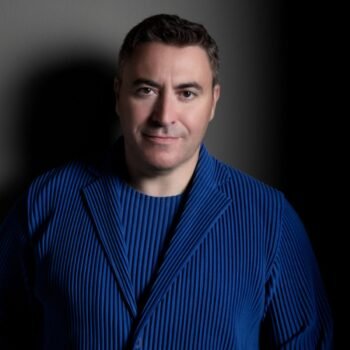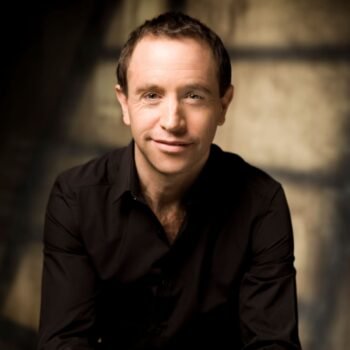‘Vengerov Plays Brahms’ @ Dallas Symphony Orchestra
—Gregory Sullivan Isaacs
This weekend (November 3-5), the Dallas Symphony Orchestra presented a pair of welcome masterpieces. The program opened with Brahms Concerto for Violin and ended with Sibelius’ Symphony No. 1—both works perfect for the amazing acoustics of the Morton H. Meyerson Symphony Center. (Because of scheduling conflicts, I attended the Sunday performance.)
The primary interest, of course, was in hearing how these two famous and much-loved pieces would fare in the hands of the guest-star performers: violinist Maxim Vengerov and conductor Mark Wigglesworth. The results were definitely exciting but also raised a few eyebrows.
Vengerov’s performance of the Brahms displayed a greatness that kept us on the edge of our seats as he displayed the remarkable technical prowess for which he is justly renowned. Musically, he took a muscular, almost bare-knuckled, approach to the Brahms, more usually performed in a rather stately manner. He provided some gorgeous nuance and perfectly placed rubato, but the overall impression (while impressive and exciting) was one of aggression. His tempi were excellent, though he conveyed a general feeling of rushing—even though (technically), that might not actually have been happening. His constant use of a fast vibrato added an edge to even his sweetest playing.
Further, Vengerov seems to demand more sound from his 1727 Stradivarius violin (“ex-Kreutzer”) than it is able to deliver. He even broke some bow hairs in the finale, something rarely seen in the more majestic music of Brahms.
In the June 2018 issue of The Strad, Vengerov is quoted as saying that at first when he received the instrument, it possessed “only a relatively small sound; I thought it would be perfect for chamber music.” Later in the article, he adds that, with the help of a sympathetic luthier (Nahum Tukh), the sound of the instrument was expanded. Yet he plays it even now as though it requires a stern master.
None of these impressions are intended to be negative: they are observations concerning his artistic approach to the concerto. Vengerov delivered a most welcome and unique take on a familiar masterpiece. (And his encore performance of a piece by J.S. Bach gave us a lovely experience of his broad stylistic range.)
There is no doubt that Wigglesworth is a fine conductor, and he proved that again on Saturday evening. His podium technique is precise, impressive, and expressive at the same time, with never a wasted motion. It is easy to see why he won the 1989 Kondrashin Conducting Competition in Amsterdam, which first brought him to international notice. His subsequent employment controversies are irrelevant.
As to the present concert, he was always right with Vengerov, even when the violinist pressed the tempo. Further, his performance of the Sibelius symphony was spectacular. He may have overplayed some of the big moments, blunting their overall effect, but he completely mastered Sibelius’ compositional style. The lush romantic moments were superbly contrasted with those rooted in the vast vistas of the composer’s native Finland. In addition, he brought out the competing influences Sibelius absorbed as he straddled music’s difficult transition from the late Romantic period to the early 20th century.
WHEN: November 3-5, 2023
WHERE: Morton H. Myerson Symphony Center, Dallas TX
WEB: dallassymphony.org (Coming up: Strauss Don Juan, November 9-12)

